Our recent article about the efforts of the Pigeon Historical Societies’ effort to move and restore two cabins thought to be belonging to the 1860s colony of Ora Labora which was located near the town of Bay Port, generated a lot of interest. We did a little research, and it turns out there are a lot of Michigan pioneer log cabins in the Thumb region. We were pleasantly surprised; we had thought that many of the log cabins in Huron County in the 1800s were destroyed in the great fires of 1871 and 1881. The following list of restored pioneer cabins can be visited, especially during summer.
Bad Axe Pioneer Log Cabin Village

The Bad Axe Historical Society is the curator of Michigan’s largest collection of authentically restored pioneer log buildings. The pioneer log cabins make up a mini-museum collection behind the Bad Axe City Hall. The rustic cabins were donated and moved from various locations around Huron County. Each cabin contains antiques, household goods, and artifacts of the period. The Society has done an excellent job preserving and presenting this collection of log structures. Its big open house is log cabin day during the last weekend of June.
The Ullrich Family Cabin (1873)

The Ullrich House was the first cabin brought to the Village by the Society in 1976. It was the home of Mr. and Mrs. George Ullrich and their 11 children. George and Magdelena immigrated to the United States from Germany in March of 1873 with five children; another child had died as an infant and settled in Sebewaing, Michigan. There they had an additional six children and managed a farm. Local lore tells the tale that the 20X30 foot two-story cabin was built in one day in an effort similar to a barn raising. The museum’s contents contain much of the original furnishings of the Ullrich‘s.
The General Store

If you’re a history buff, this example of an old-fashioned general store will not disappoint. It’s genuinely a pioneer log cabin museum. Antique consumer goods donated by family members who once owned their own general stores in the area are on display. You can feel that stores like this were a social focal point for the entire community, and some also acted as the local post office.
The Becking School (1895)

The Becking School was built in 1895, and it noted that his school was one of the last operating log schoolhouses in the region. The schoolroom depiction has been created to represent a composite view of what the 100 or so one-room schoolhouses in Huron County might have looked like. Period furniture, children’s desks, chalkboards, and books are all displayed. An online search for Becking School places one possible original location south of Bad Axe in Colfax Township, and other results show its location in Sheridan Township.
William Schave Barn Museum (1872)

Built the year after the first great fire of 1871, when the building of barns overtook sawmills as the county changed from logging to agricultural. It’s one of the largest log buildings on the site. The inside display includes the tools and implements common in the late 1800s, including bean sorters, milking machines, and horse tack. The barn was initially owned by William Schave from Port Hope and escaped being burned in the Great Fire of 1881, ravaging much of the Thumb region. The barn is also a point on the Thumb Quilt Trail and displays the quilt block called Log Cabin.
The Linton Memorial Chapel (1883)

Originally the home of Robert Linton. The Michigan pioneer log cabin chapel depicts the rustic pioneer days of community worship in the Upper Thumb. The display includes an original Estey Reed Organ and many other donated artifacts from personal collections and churches of the late 1800s. The chapel is active and available for weddings for a $40 donation.
The Blacksmith Shop

A town’s blacksmith was akin to today’s local hardware store. It was critical in a growing agricultural community with its forge using coal or charcoal. The local blacksmith had the ability to make and repair farm implements, tools, nails, horseshoes, and chains. Many rural shops also repaired wagons and horse tack
The pioneer log village is open each Sunday during the summer from 2 to 4 pm between Memorial Day and Labor Day. Admission is free.
Port Austin Historical Society Leavine Log Cabin Exhibit
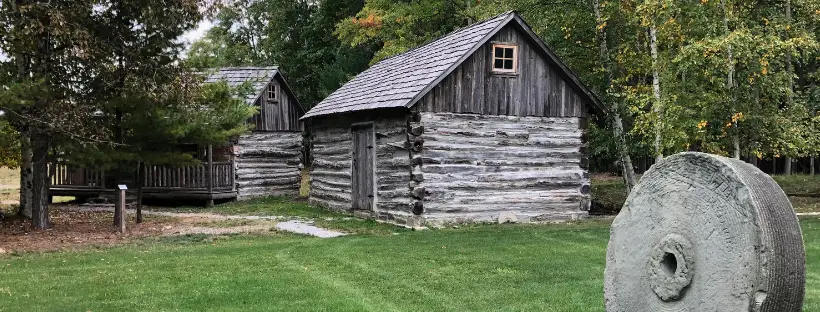
Located just east of Port Austin, the Port Austin Historical Society has a fine example of a log cabin from the late 1800s. The center is a growing collection of historical buildings and homes to the Leavine log cabin and barn. The two structures were once located on a farm and were considered two barns connected. Upon closer inspection, the two buildings are found to be a 16×20 log cabin and a 16×22 log barn. The cabin is a fine example of living in the Upper Thumb in the late 1800s and has been restored with a porch and gardens.
Elkton Log Cabin Museum (1865)
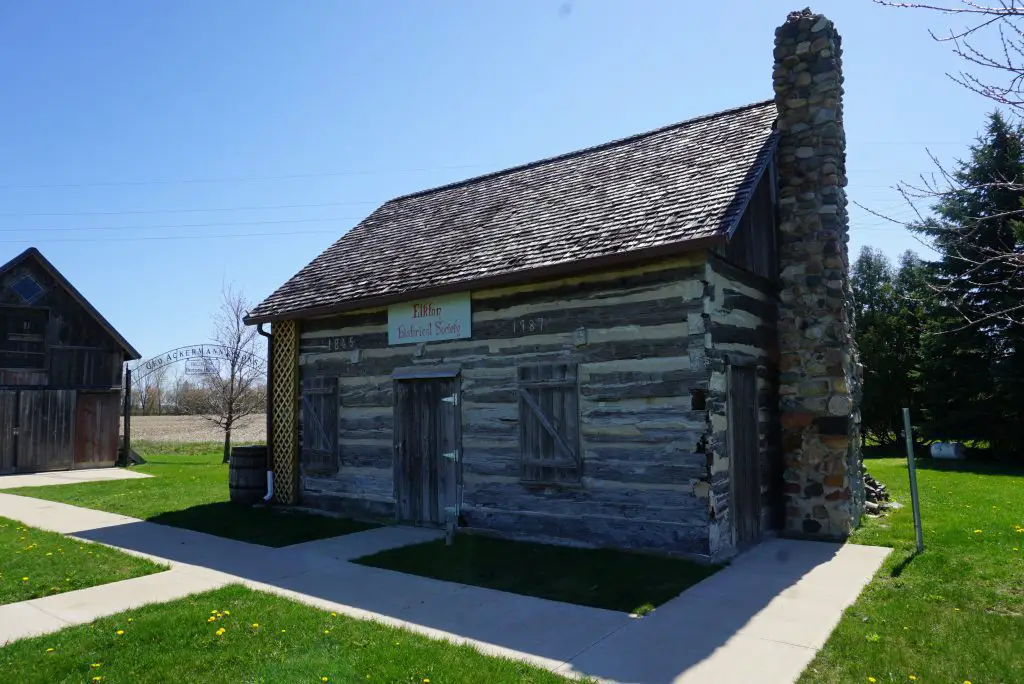
This 18 x 22-foot Michigan pioneer log cabin was built by Enos Mayhew in 1865 just north of Pinnebog. It consists of two stories with an upper dormer design similar to the Baur and Notter cabins near Pigeon. It was donated by Dr. & Mrs. Henry Schoenhals of Port Austin to the Elkton Historical Society. In 1987 it was dismantled, moved, and restored at the southeast corner of Ackerman memorial park in Elkton. The cabin is maintained by the Elkton Historical Society. Limited hours of visiting. Free admission. Call before you visit.
LaGrassa Cabin Huron City (1837)
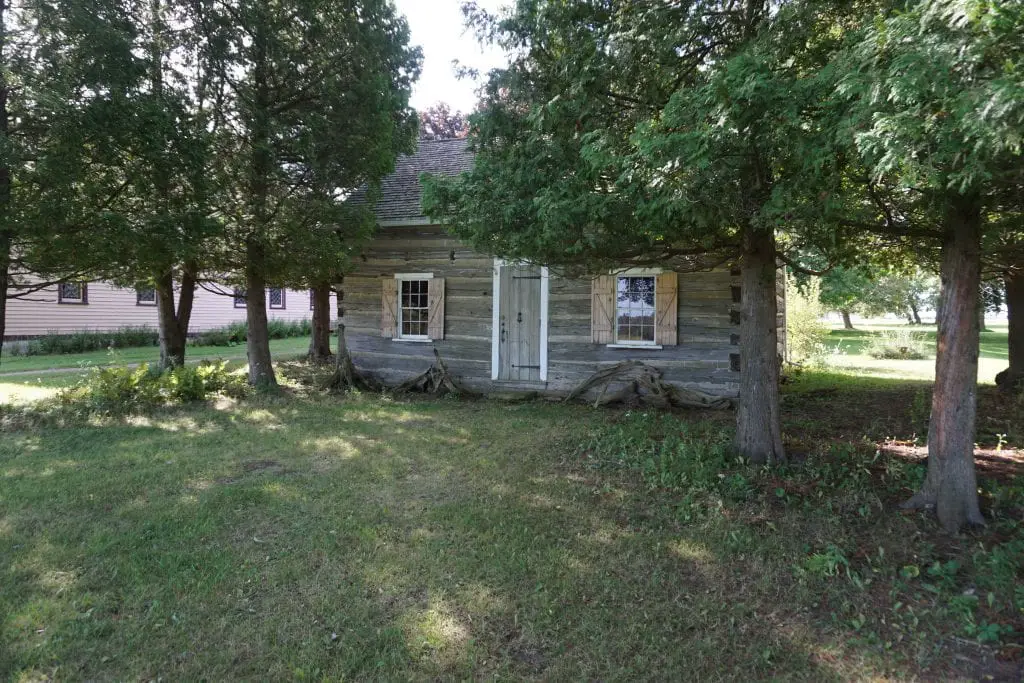
This Michigan pioneer cabin is the oldest building in Huron City Museum complex and perhaps the oldest surviving log structure in the Thumb. Mitchell and Delia LaGassa built it in 1837 when they were married. They raised 17 children and celebrated their 75th wedding anniversary at the homestead.
The log cabin survived the 1871 and 1881 fires that raced through the Thumb due to its safe location near Grindstone City. The structure was moved several times before Annabel Phelps bought and placed it behind Seven Gables. She used it as a teahouse and guest house. Carolyn Lucas moved the log cabin to its current position near the village museum when she started the Huron City Museums in the 1950s.
Sanilac Historical Museum and Village

The Sanilac County Historical Village and Museum is a collection of more than a dozen historic buildings located on ten acres of the original Dr. Joseph Loop estate in the Lake Huron harbor village of Port Sanilac.
The museum features a variety of exhibits, including a marine shipwreck room, a separate dairy industry museum, along with old-time carriages, and military and Native American exhibits. It also hosts numerous special events during the open season and year-round, such as Victorian dinners, the Halloween Spook Walk, and old-fashioned toys and penny candy from the General Store.
The museum is open from Memorial Day Weekend to October. Admission is $10 for adults, $8 for seniors and students, and free for children under 6.
Banner Log Cabin (1881)
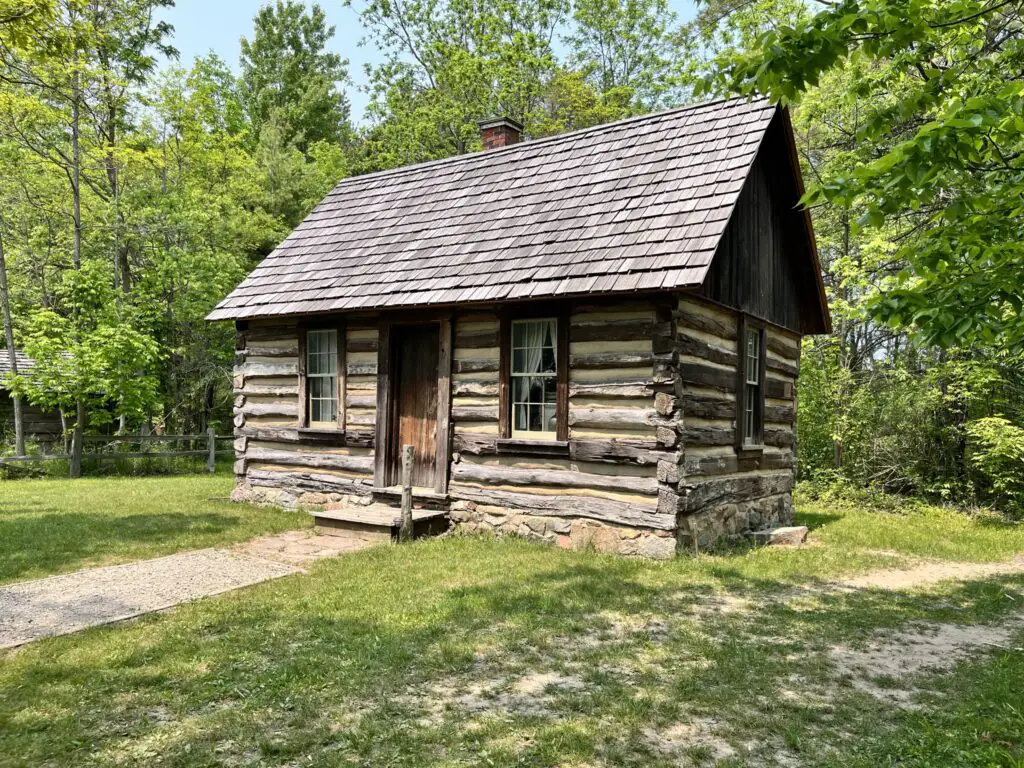
In 1882, Henry Patton and his sons, James and Elias, constructed a settler’s cabin in Wheatland Township, close to the abandoned settlement of Banner. The original cabin of their family was destroyed in the Great Fire of September 1881, leaving charred logs visible on the west wall. The cabin is now furnished with donated antique objects, common in a settler’s cabin during the 1880s.
Decker Log Crib Barn (1850)
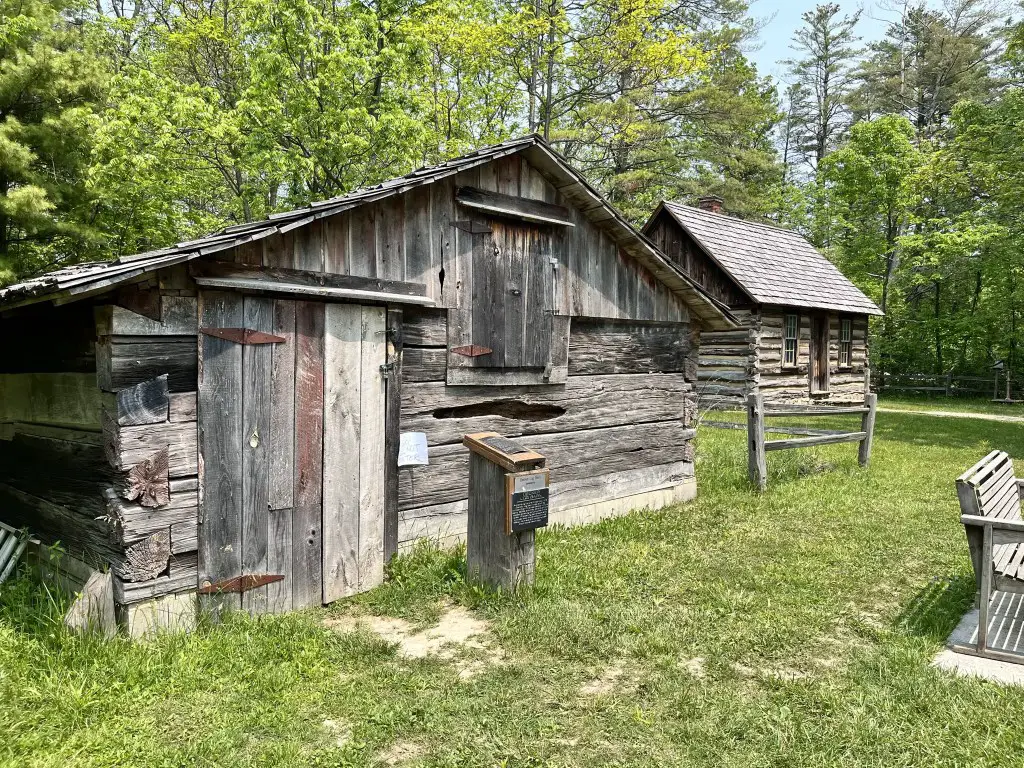
It is believed that the crib barn, constructed with hand-hewn white pine walls, was built around 1850 by Charles Decker, the founder of Deckerville village. The logs used to build the walls were virgin timber, with the largest piece measuring 10 inches thick, 16 inches high, and 30 feet long. Only sixteen pieces were needed to construct the entire building, with four pieces on each of the four sides. The dovetail joints were so well-crafted that chinking was unnecessary. The roof features hand-split cedar shakes.
Houndtown Cabin (1882)
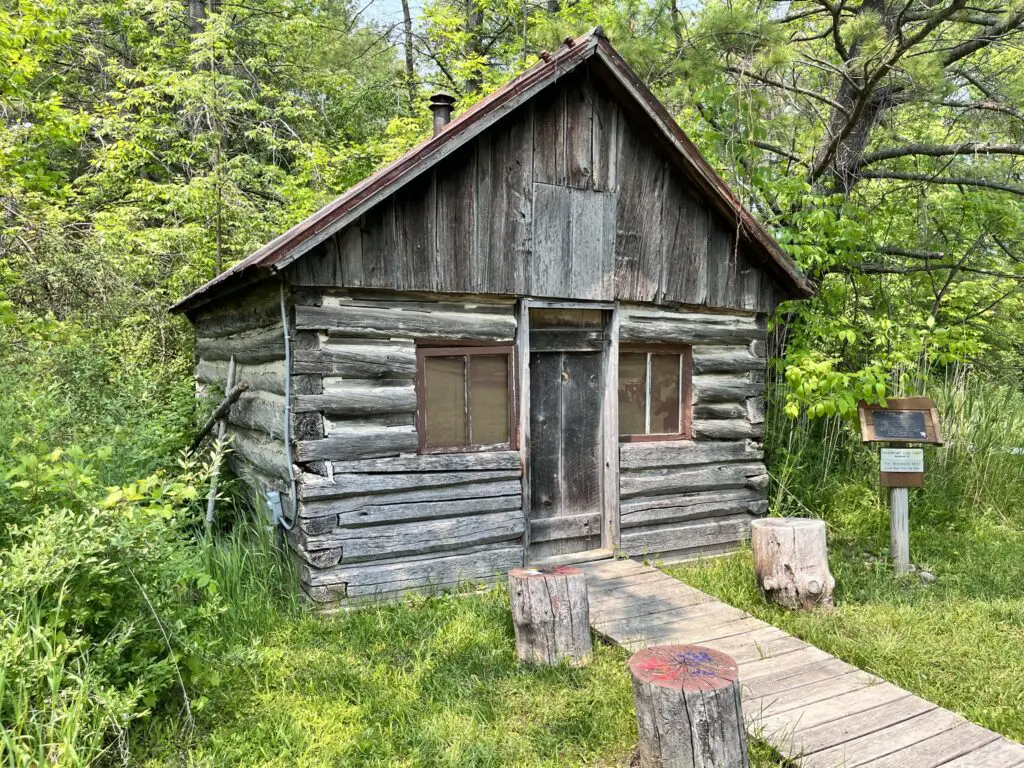
This chink and mortar cabin originally stood northwest of Deckerville. Its location in the county was called Burgitville or Houndtown as so many area residents owned dogs. It was built after the fire of 1881.
Hunting and Fishing Cabin (1937)
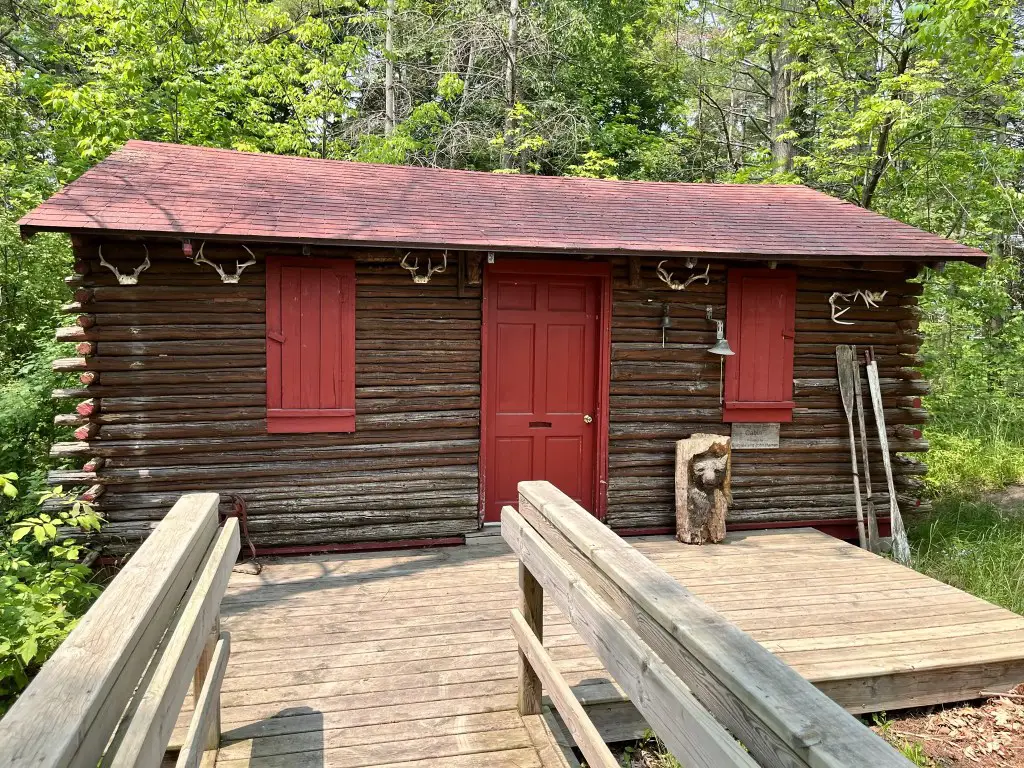
While not one of the pioneer cabins this is an excellent example of a homemade hunting shack or deer camp that was common throughout Michigan in the 1900s. In 1937, a teenager named William Alexander Wright built a small log hunting cabin in the woods on his family’s property in Sanilac Township. This same young man eventually joined the U.S. Navy Air Corps and distinguished himself as a pilot through World War II, in the Philippines, and during the Korean conflict.
Other Cabin Locations In The Thumb
Parisville Log House (1876)
Parisville. In Huron Co., at the site of the oldest Polish settlement in the U.S. (1854), is a log house built about 1876, now used as the Archives/Library of St. Mary’s Historical Society. “156 Years of Poles in Parisville.” It is north of the church. Take M-142 east of Bad Axe l0 miles, turn south onto Parisville Rd., and go 6 miles. Near Ubly. Open 1 to 4 p.m. (989) 479-9114.
Mayville Cabin
Located at the Mayville Area Museum of History and Genealogy. The historic log cabin contains artifacts typical of a one-room schoolhouse of the late 1800s. Pancake breakfast from 9 a.m. to 2 p.m. with lots of activities and special displays for Log Cabin Day. In Tuscola Co. on US-24 south of Caro, located at 2124 E. Ohmer Road, Open 9 a.m. to 5 p.m. Tel. (989) 843-7185 (office) or (989) 843-0011.
Sebewiang Missionary Log Chapel (1844)
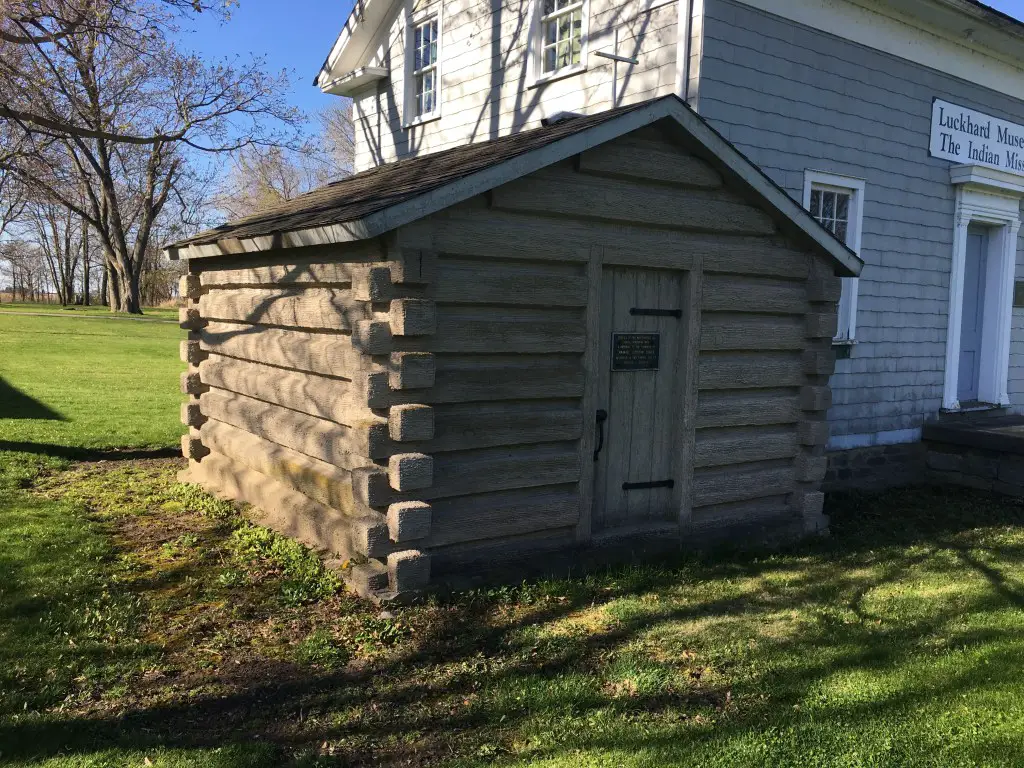
The Sebewaing Mission Cabin is a historic log cabin in Sebewaing, Michigan. It was built in 1844 by the Reverend John J. Auch, a German Lutheran missionary who came to the area to work with the Ojibwa tribe. The cabin was a home for Auch and his family and a place for religious services and community gatherings. The cabin was abandoned in the early 1900s, and a facsimile made of cast concrete of the chapel at its current location on the Sanilac County Historical Museum grounds. The mission and cabin are now open to the public for tours.
The original cabin is made of hand-hewn logs and measures 20 by 20 feet, and was used as a chapel and school. The cabin was originally located on the banks of the Sebewaing River, but it was moved to its current location in 1976. The cabin is listed on the National Register of Historic Places.
Related Michigan Pioneer Cabins History Reading
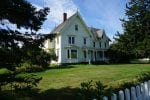
The Faded Glory of Huron City, Michigan – Michigan small towns have a special place in the hearts of their inhabitants. However, some towns slowly fade from their once-busy streets to a scene resembling a stopped clock. No longer functional but certainly recognizable. One such town is Huron City, Michigan.
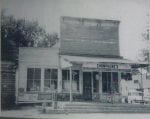
Pinnebog is a Tiny Taste of the Michigan Thumb – This little four-corner settlement was first called Pinnepog, (Chippewa for partridge drum). However, there was another Pinnepog five miles north on Saginaw Bay, so this one changed to Pinnebog (“a high sounding and dignified way of saying pine bog”).

The Ora Labora Experiment by Florence McKinnon Gwinn – The Ora Labora Experiment is an excerpt from a common historical document that has been scanned and re-published numerous times on the Internet from the “Pioneer History of Huron County” – 1922 by Florence McKinnon Gwinn, Caseville, Michigan. Some researchers consider this work the starting point for further research of the colony
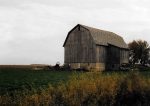
The Old Michigan Barns of Huron County – The massive wooden Michigan barns, once prevalent in the Upper Thumb. Most of the barns in Michigan’s Upper Thumb were built after the great fires of 1871 and 1881. Unless they were diligently maintained are slowly rotting away. Today’s steel pole barns can be quickly put up and don’t require the massive beams that were taken from Michigan’s old-growth forests.




